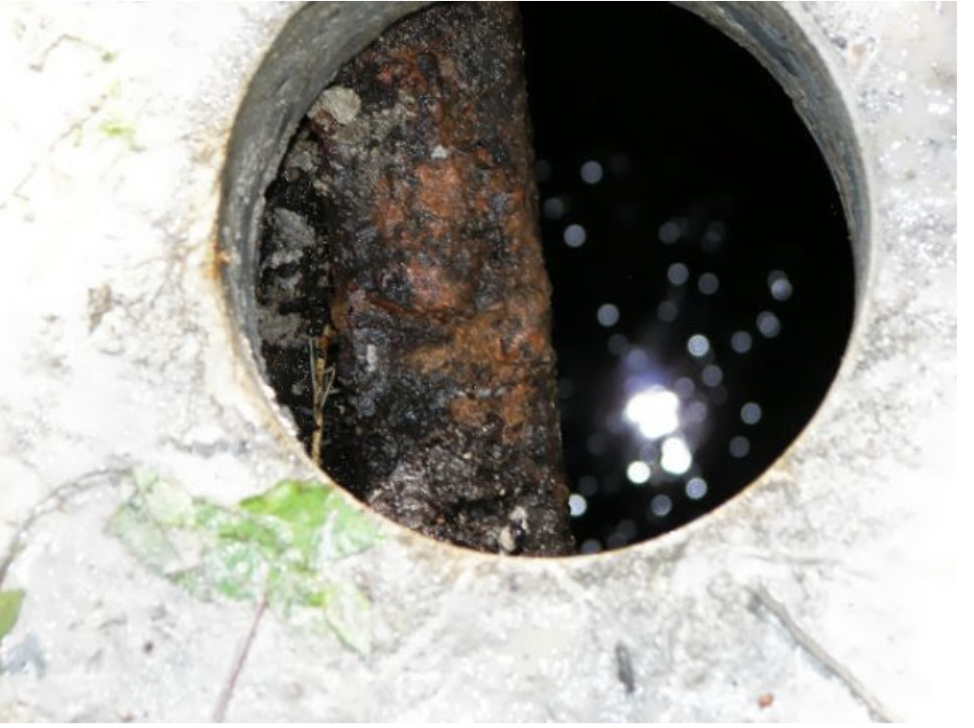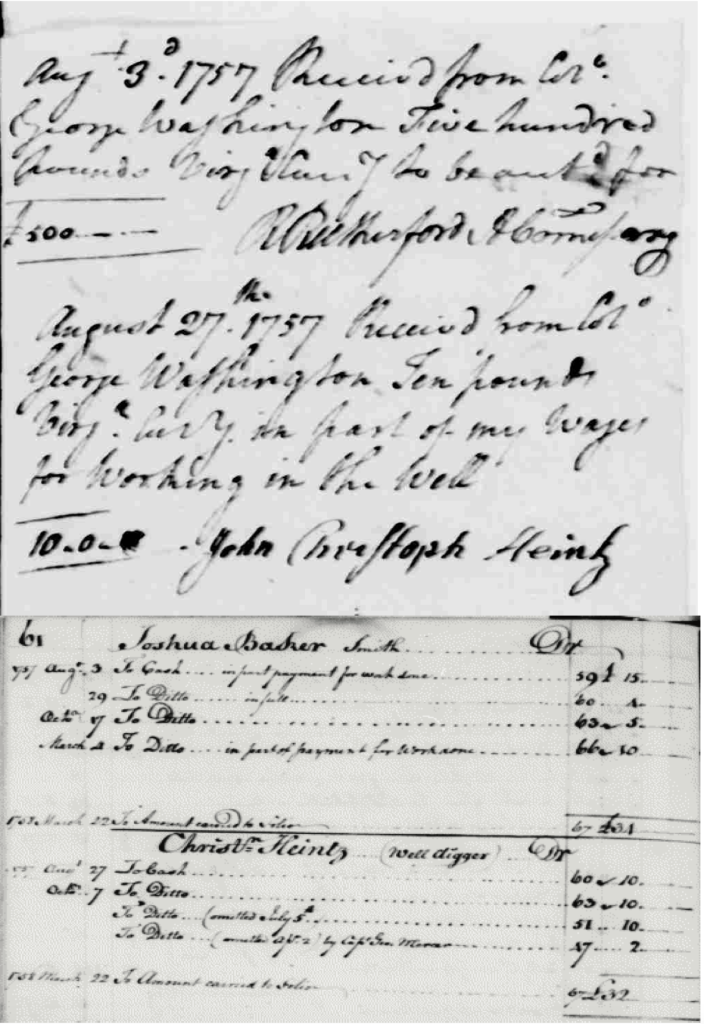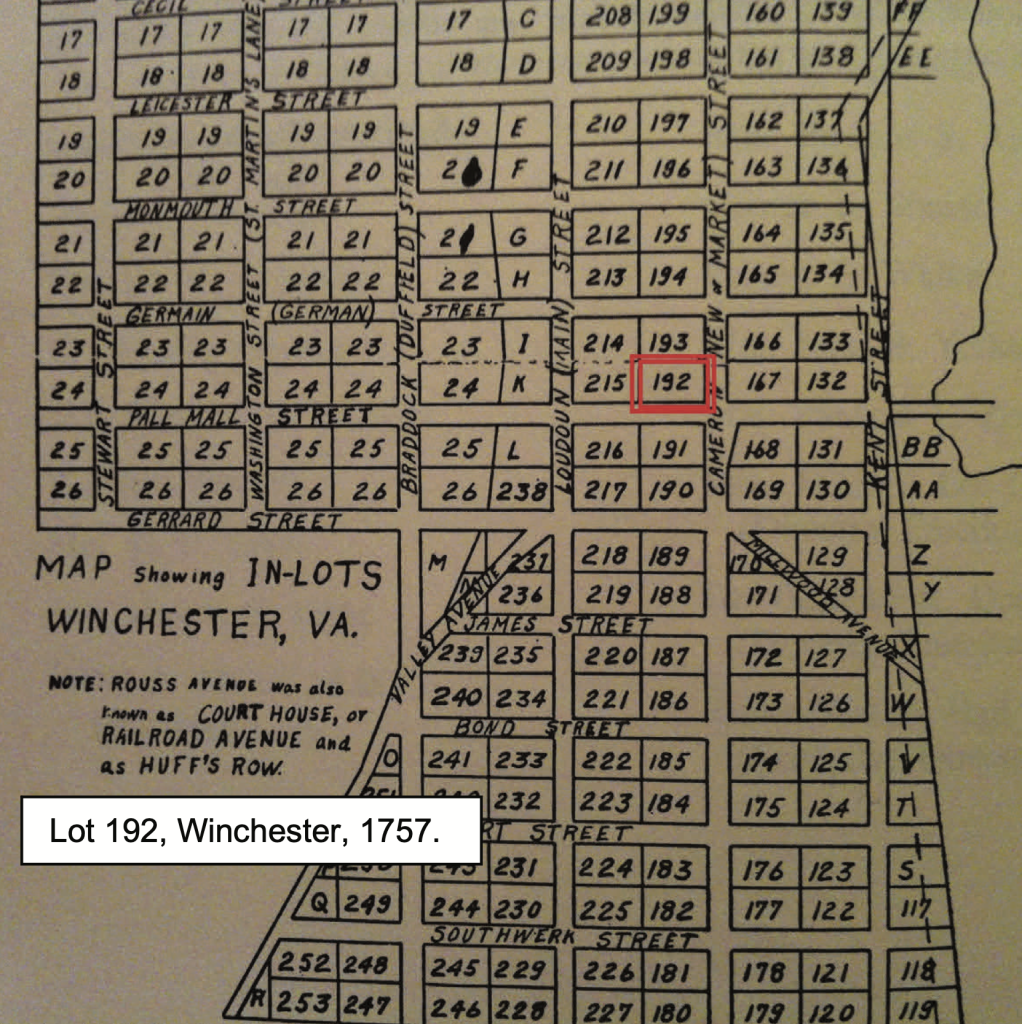
The Well at Fort Loudoun is 103 feet deep and was blasted out of the mostly solid rock and limestone by John Christopher Heintz from 1757 to 1758. The Foundation is exploring its options to excavate the Well and retrieve whatever artifacts may be encased in the 28 feet of silt and sediment at the bottom. On this page you will find pictures of the interior of the well, near the surface. Also, on this page are a sketch of what the well looked like during the Civil War, and 2 picture postcards of the well taken in the early 1900’s.

Additionally, black and white photos from the 1920’s and 1930’s were donated to the Foundation by the Chip Hardy Family. These photos show Anne Hardy, who was the owner of 419 N. Loudoun Street, and various members of the family posing with the well in the background. The freshly poured concrete is visible in many of the pictures, with a couple of them showing the wooden planks that formerly covered the well. A newspaper article written by Anne Hardy is included, as well.
| To learn more details about Washington’s Well, read Washington’s Well, written by Stevan A. Resan, French & Indian War Foundation Vice President . |
The Well Digger at Fort Loudoun

The following piece was written by Scott Straub and originally published in the January 2014 FIWF Newsletter.
In 1757, George Washington commissioned Johann Christoph Heintz to dig a well at Fort Loudoun in Winchester, VA. Varia- tions of Heintz’s name show up in letters and journals, but it is undoubtedly the same man.
As I was researching Heintz, I came across a Family Tree website that provided additional information about the family. Heintz was born in Germany before 1737 and was listed at the State House at Philadelphia, among the “foreigners imported in the Snow Good Intent, John Lasly, Commander, from Amsterdam and last from Gosport, qualified the 23rd October, 1754.” The people onboard came from Hesse, Hanau, the Palatinate and Switzerland.
Other references to Heintz, and his well digging can be found in George Washington’s Account book or letters. The Account book listings can be found as listed:
- “April 1, 1757-Christian Heintz in part pay for digging well in Ft. Loudoun”
- “July 5, 1757- Christopher Heintz well digger”
“August 27, 1757- John Christoph Heintz” “October 7, 1757- John Christian Heintz- well digger” - “April 22, 1758- John Christopher Heintz- Working in barracks yard 16 days in blowing rock – Digging and blowing 48 feet in well of Fort Loudoun”
Further evidence of Heintz’s presence in Winchester can be found at Mount Hebron Cemetery on the side of the last remaining wall of the Old Lutheran Church.


The Heintz name is also mentioned in a land grant from Lord Fairfax.
The Right Honourable Thomas Lord Fairfax Baron of Cameron in that Part of Great Britain called Scotland Proprietor of the Northern Neck of Virginia – To all to whom this present visiting shall come sends Greeting – Know ye that for good causes for & in Consideration of the amount of the annual rents & Covenents herein after reserved & exercised I have given granted & confirmed & by these Presents for me my Heirs & Assigns do give and grant & confirm unto Magdalene Heintz of Frederick County for & during the terms of her natural life & after her Decease to her son Christopher Heintz one certain Lot or half Acre of Land situate lying & being in an Addition to the Town of Winchester in the said County & within my said Propriety, it being the Lot No. 192, bounded on the Southward Side by Pallmall Street, on the Westward End by the Lot No. 215, on the Northward Side by the Lot No. 193 and on the eastward End by Cameron Street as by a Survey & Plot thereof made by Mr. John Baylis dated January the 1st 1758
The Heintz Family lived at Lot 192 which occupied 1⁄2 of the block on Cameron Street in 1758; this probably allowed room for a house, a garden and some animals (chickens, pigs, horses). In later years, the lot was subdivided which allowed two more houses to be built on it.
Johann was married to Magdelene and had 2 sons, George and Christopher. Both sons served in the military during the Revolutionary War. From their pension applications, it can be seen that George fought at the Battle of Guilford in SC. Christopher guarded prisoners brought back to Winchester from the British defeat at the Battle of Saratoga. Both sons changed the spelling of their last name to “Haynes” and “Hains”, respectively.
Number S-38791 | State of Tennessee, Washington County, July 1819
Be it remembered that on the 19th day of July 1819 George Haynes personally appeared in open court aged 62 and being desirous of availing himself of the provision of an act of Con- gress entitled an act to provide for certain persons who were engaged in the Revolutionary War, etc., “That he the said George Haynes, some time in the Revolutionary War at what time he cannot now recollect, enlisted in the continental service in the County of Frederick, State of Virginia in the first Regiment of Cavalry of the Virginia line for three years under Captain Fentleroy of Major Bellfields’ Command that after his enlistment was taken to Charleston S.C. and at the Battle of Guilford his Captain (Fentleroy) was killed and he was put under Captain Gunn of 1st Regiment in which he was enlisted- Captain Gunn was replaced by Captain Henry Bayer by whom he was discharged in the State of Virginia at Staunton after having faithfully served out three years which discharge he kept for some time and never having drawn any of his pay he put the said discharge into the hands of Martin Fetner to draw his pay for him from whom he has never heard since but supposes said Fenton may have drawn thereon and pocketed it from which circumstance he now has not the power to produce said discharge. James Sevier, Clerk; also Iarat Brown, John Patton, McCollom H.M. Bayles

Pension papers of Christopher Hains- Revolutionary Army
Number W8896 | State of Tennessee September the 29th 1832 Washington County
On this day and date above personally appeared before me,
Lot 192, Winchester, 1757.
Lot 192, Winchester, year 2013.
Levi Bowers one of the acting Justices of the Peace in and for the County and State aforesaid, George Haines, the affiant, andwho after first being sworn by me deposed and stated that some time in the same years after the surrender of Burgoyne, in 1777, this deponent knew of Christopher Haines, entering into the army of the Revolution for two years; that said Christopher at the time resided in the County of Frederick, State of Virginia, and in the year 1777. as well as now _______ , entered in Winchester under Captain Ghilkerson or Gilkerson for two years, said enlistment was at the time that the British prisoners taken at Burgoyne defeat were brought to Winchester, and the said Christopher Haynes entered for the purpose of guarding said prisoners, and this affiant knew of his remaining at Winchester as one of the guard until said prisoners were removed from that place, which, he thinks, was Philadelphia, when said Christopher left Winchester under his aforesaid Captain and was at ____ until the expiration of his time, in the army. _____ did not see him after his departure form Winchester but saw him go with the troops from Winchester. and frequently heard of the said Christopher being in service afterward, but ______ was himself taken into the army and out into the southern cavalry and Christopher was of the infantry in the north. _____ also understood from others that said Christopher Haynes entered the militia service after being discharged from the regular army.

Johann Christoph Heintz’s efforts to find fresh spring water may have been frustrated by runoff and seepage water, but the solid rock well he blasted out to a depth of 103 feet may turn out to be the ultimate time capsule. There are approximately 28 feet of sediment and silt at the bottom of that well that may hold artifacts dating from the early 1930s back to 1757.
Interior of Washington’s Well
In July 2013, video was taken of the interior of George Washington’s Well at the site of Fort Loudoun.
For the first time since 1758, the interior of the well has become visible to researchers, archaeologists and students of history.
Since the recorded depth of the well is 103 feet, this video taken at 75 feet suggests that there is 28 feet of sediment that could contain artifacts dating from 1930 when the concrete cap was poured all the way back to 1757 when the well was originally dug.
| The French & Indian War Foundation wishes to express its gratitude to Subsurface Technologies, Inc. for providing their services and for videotaping the interior of Washington’s Well at the Site of Fort Loudoun. |


























